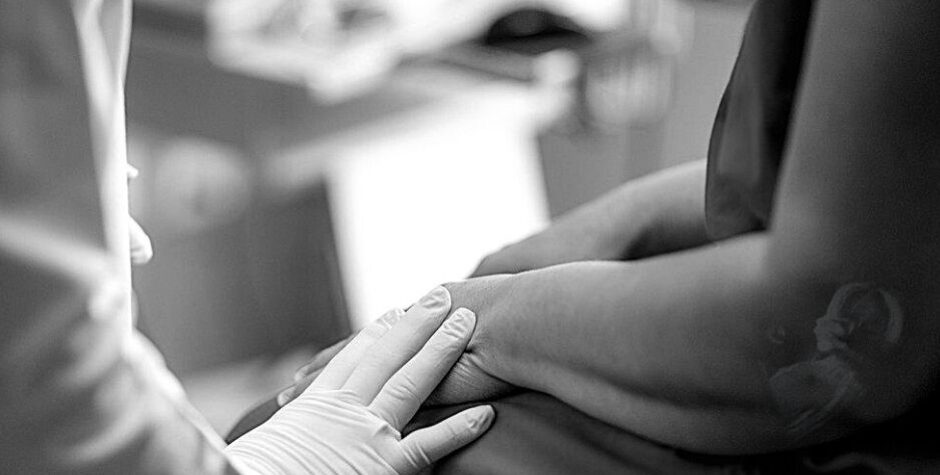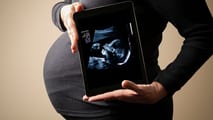By Cherline Louissaint, Esq.
Abstract from the book "Law and Prevention of Abortion in Europe", Sallux, 2018.
1) Risks to Physical Health. 4
1) The occurrence of psychological problems. 11
- a) Relative Impacts of Psychiatric History. 14
- b) Abortion as an aggravating factor of suicide. 14
- c) Population at Risk. 15
II Implications on the Relationship Between the Couple. 16
3) Harmful Sexual Behaviours. 18
Abortion is not a harmless act; many studies conducted throughout the world show that abortion has both short term and long-term severe consequences for the health and relationship of couples.
The biggest abortion centre, Planned Parenthood, does not hide this, but points out the various short term dangers of abortions on its website: allergic reactions, uterus blood clot, incomplete abortion, inability to terminate the pregnancy, infections, cervical injury and injury to other organs, undiagnosed ectopic pregnancies and excessive bleeding. Underage women are more prone to these short-term risks and are, for example, two times more likely to have their cervix torn during abortion. Similarly, the laboratory that produces abortion pills reported 2,207 such cases, of which 14 deaths, after the pill had been taken.
Several studies have been conducted to find out if abortion considerably increases the risk of death regardless of the cause compared to women who gave birth. These studies reveal that the risk of dying in the year following abortion increases by 80%, and the risk of dying through natural causes by 60%, the risk of dying of cardiovascular diseases or mental illnesses by 300%, the risk of dying from an accident by 400% and the risk of developing breast cancer by 30%.
Research has refuted the perception that maternal mortality is higher in countries where abortion is prohibited, the example of Chile being particularly significant: the rate of maternal mortality went down by almost 50% after the prohibition of abortion, reaching 22 deaths in 100,000 deliveries. The country's maternal mortality rate is sometimes two times lower than that of the United States where the rate sometimes goes as high as 44 deaths per 100,000 births. Maternal mortality rate is also very low in Ireland and Poland as compared to European countries where abortion is widely permitted.
For further pregnancies, abortion increases the risk of premature births and the birth of a baby weighing under 1.5 kg by 125%.
Abortion also increases the risk of psychological problems for a woman who aborted compared to a woman who carried her pregnancy to full term. The risk of committing suicide is multiplied by 6.5 (650%), the risk of developing mental health problems by 81%, the risk of being admitted in a psychiatric hospital increases by 53%, that of depression by 37% and the risk of alcohol abuse, alcohol addiction, drug abuse and drug or substance addiction increases by 261%, 142%, 313%, 287% and 280% respectively.
Among women who got abortion before the age of 25, the risk of suffering from mental problems is particularly high. After abortion, 42% of them suffer from depression, 39% suffer from anxiety, 27% report having suicidal thoughts. They form 50% of the total number of people who commit suicide or have suicidal thoughts – not counting young underage girls.
Men are also at risk of having mental health problems after their partner has undergone abortion. 40.7% of them experience severe psychological distress prior to the abortion, distress that continues for 30.9% of the men three weeks after the abortion. 35% feel pain and have a feeling of emptiness four weeks post-abortion. Cases of men between the ages of 18 and 22 who became suicidal after they were informed about their partner’s abortion were also observed. The relationship between the couple is likely to deteriorate. 22% of couples break up after an abortion; 46% of women reported that the abortion was a major cause of crisis and 48% think the relationship with their partner changed drastically after the abortion. Abortion increases the risk of argument initiated by either the man or woman about all kinds of issues. Women who have had abortion with their current partner, compared to those who haven’t, are more likely to argue about money (75%), children (116%), or even about their partner’s family (80%).
Men whose current partner has had abortion are more likely to have conflicts due to jealousy (96%), about children (195%), or even about the use of drugs (385%), compared to men whose partner has not had an abortion.
Abortion also causes sexual dysfunctions between the couple. Up to 31% of women who abort experience sexual dysfunction. Compared to woman who have not undergone abortion, the risk of not reaching orgasm increases by 112%, having premature orgasm by 135%, feeling pains during sex by 182% and feeling anxious during sex by 158%. Men are also affected: the risk of having premature ejaculation or low sexual desire is increased by 83% and 98% respectively.
* * *
Yet, the facts are there. Abortion is far from being a harmless act that is meant to repair an “accident” – getting pregnant! Abortion has medical consequences for the woman and has repercussions on her medical and physical health. Her partner is however not spared and can also suffer mentally. Several studies have revealed that giving birth seems to protect the health of the woman. Conversely, abortion seems to exacerbate health problems (I) and happens to have undeniable negative effects on the relationship of couples (II).
- Health implications of Abortion
Abortion has an effect on both physical (A) and mental health (B) and can lead to death.
Abortion has consequences for the physical health of the woman, paving the way for the development of certain behaviours, symptoms and diseases (I) that can lead to death (2).
Abortion can have several short-terms medical risks, as recognised by the biggest abortion organisation, Planned Parenthood. This organisation warns women about the risks of abortion, in particular, allergic reactions, clotting of blood in the uterus, incomplete abortion, inability to terminate the pregnancy, infections, cervical injury and injury to other organs, undiagnosed ectopic pregnancies, excessive bleeding.[1]
A study conducted in the US reveals that bleeding or haemorrhage occur in more than 1% of abortions carried out during the first trimester and in more than 2.5% of abortions done during the second trimester.[2] Uterine perforation occurs in 10 to 15‰ abortions. This can damage the pelvic vessels, intestines, bladder and ovaries. Over 3% of abortions carried out during the second trimester result in cervical trauma. Further, infections are the most common short-term complications and occur in 1 to 5% of the cases.[3]
Underage women are more likely to suffer short-term physical damages than adult women, as their body is not fully developed and, hence, does not have the protective power of the cervical mucus of adult women. So, for example, underage women are two times more likely to experience cervical tearing during abortion.[4]
In England and Wales, it was established by the Department of Health that in 2014, 317 women had to be hospitalised for several nights after abortion and more than two-thirds of these prolonged hospitalisation were due to late abortion over 20 weeks. Furthermore, 330 cases of complications resulting from abortion were recorded.[5] In Belgium, 160 cases of abortion-related complications and 123 cases of hospitalisation over 24 hours were recorded in 2011.[6]
Taking abortion pills could lead to short-term risks such as abdominal pains, cramps, vomiting, headaches, fatigue, uterine haemorrhage, viral infections and pelvic inflammatory diseases.[7] Incidentally, the laboratory that produces the abortion pills reported 2,207 cases in the United States after the use of this pill – mostly cases of haemorrhage: 339 cases of bleeding requiring blood transfusion, 256 infections -- of which 48 were severe, 612 hospitalisations, 14 deaths, etc.[8]
- Premature births:
In the United States, the Institute of Medicine of the National academy of Sciences declared abortion as one of the risk factors of premature births.[9] In addition, more than 130 published studies show by statistics the correlation between abortion and subsequent premature births and low birth weight. Abortion increases the risk of premature births by 37%. This risk is increased by 93% if there have been at least 2 abortions.[10] Concerning premature birth, the risk of delivering before 32 weeks of gestation is increased by 64% if the woman has previously had an abortion.[11] This risk is two times more likely to occur if the woman is suffering from cervical dysfunction.[12] The woman may deliver before 28 weeks and this risk is increased by 69% if the woman has had at least two abortions.[13] Incidentally, due to previous abortions, the risk of giving birth to a baby weighing less than 2.5 kg increases by 43% and, a baby weighing under 1.5 kg by 125%.[14]
- Placenta Praevia of low-lying Placenta:
This is an abnormal implantation of the placenta, lying unusually low in the uterus. It can eventually cause bleeding. Several studies show that this risk is increased from 30% to 50% following an abortion.[15] Furthermore, another study revealed that the risk of developing placenta praevia is more than doubled when there have been two or more abortions in the past.[16]
- Breast cancer:
Although there are divergent opinions concerning the direct link between abortion and breast cancer, it has been proven that women who carry their pregnancy to full term reduce their risk of getting breast cancer.[17] In fact, the risk of breast cancer increases with the quantity of oestrogen secreted in the course of life. In effect, in 90% of the cases, breast cancer is due to an excessive production of oestrogen and problems relating to the maturation of breast cancer.[18] A pregnant woman produces oestrogen, but after 32 weeks of pregnancy, she also develops anticancer cells.[19] Actually, terminating the pregnancy through abortion drastically reduces the level of hormones, allowing the cancer cells a transitional period during which they can become carcinogenic.[20] It has also been established that the earlier a woman carries her pregnancy to full term, the lesser the risk of getting breast cancer.[21]
Today, 53 out of 68 studies on the topic show a connection between abortion and breast cancer.[22] One of the most remarkable studies is that of Professor Janet Daling, initiated by the National Cancer Institute in the United States.[23] Among women who had been pregnant at least once, those who aborted had a 50% higher risk of developing breast cancer compared to those who carried their pregnancy to full term.[24] Another study also shows that a woman who undergoes abortion after carrying a pregnancy to full term has a 30% higher risk of developing breast cancer.[25]
Generally, a woman has a 12% risk of developing breast cancer in her life, but if she has already had an abortion, this risk rises to 18%. Furthermore, for women who have a history of breast cancer in their family, the risk increases by 80%. This risk increases to up to 100% for women who had abortion before the age of 18.[26]
Maternal mortality is defined as “the death of a woman while pregnant or within 42 days of termination of pregnancy, irrespective of the duration and site of the pregnancy, from any cause related to or aggravated by the pregnancy or its management but not from accidental or incidental causes.”[27] It is often argued that the rate of maternal mortality increases when a country adopts restrictive abortion laws, due to the rise in the recourse to unsafe abortions because of its illegality. It is true that abortion is less dangerous when carried out in a medical setting. However, some comparative studies have proven that, at the same level of development, the maternal mortality rate is lower in countries where the recourse to abortion is strongly restricted. For example, in 2010, the maternal mortality rate in Ireland was 1 to 2 per 100,000 births as compared to 10 deaths per 100,000 births in England and Wales.[28]
In Malta and Poland (where, like in Ireland, abortion is prohibited or restricted), the maternal mortality rates are 3 and 9 per 100,000 births respectively.[29] On the contrary, in many countries where abortion is legal, the maternal mortality rates have not decreased; they are reach 9 and 6 per 100,000 births[30] in France and Belgium respectively. In Italy, where the rate of abortion is low, the maternal mortality rate is 4 deaths per 100,000 births.[31]
Likewise, in Chile, the maternal mortality rate did not increase after the introduction of the new legislation reducing access to abortion (1989), but continued to decrease, dropping from 41.3 deaths per 100,000 births 1989[32] to 22 deaths per 100,000 in 2013.[33] This rate is the lowest in the whole of Latin America,[34] and lower than that of the United States, which recorded 44 deaths per 100,000 births in 2013.[35]
A study conducted in Denmark indicates that as result of an abortion carried out in the first 12 weeks, there is an 80% increased risk of dying in the first year and 40% in the 10 years that follow, compared to women who delivered.[36] A comparative analysis of studies conducted in California and Finland, gives us information on the various causes of death among women who have had abortion and women who were pregnant, in a follow-up of one to eight years.[37]
- Natural Causes:
In the study conducted in Finland, it appeared that 45% of deaths among women who had recently been pregnant were due to natural causes.[38] The risk of death in the year that followed the pregnancy increased by 60% for women who aborted, compared to women who gave birth.[39] The rate of hospitalisation was increased by 36% after abortion.[40] The study in California found a considerable difference concerning deaths caused by HIV/AIDS – considering the number of infected women, those who had aborted were twice the number of those who hadn’t (78.9 women had aborted compared to 36.7 women per 100,000 of those who delivered).[41]
This difference is also quite significant with regard to cardiovascular diseases and mental illnesses. Women who choose to abort their first pregnancy are three times more likely to die of these illnesses compared to those who have already carried a pregnancy to full term.[42] The abuse of alcohol, drugs and food, which often follow abortion can explain these results. What’s more, women who abort have a higher risk of suffering from depression. However, depression is a separate factor of death caused by heart disease[43] and also a factor of the development of several forms of cancer.[44] Women who abort also lose their maternity protection which reduces the risks of breast, cervical, bowel, rectal, ovarian, endometrial and liver cancer.[45] In addition, breast cancer[46] (as seen earlier) and cervical cancer[47] are often linked to abortion and late maternity.
- Fatal accidents:
During a one-year follow-up, it was revealed that the risk of accident-related deaths is four times higher among women who have aborted than among those who kept their babies. An eight-year follow-up revealed 82% higher risk.[48] These results can be explained by the fact that a woman with a new born baby will be more careful to avoid such risk compared to a woman who does not have children. Similarly, a woman who aborts is likely to take more risks, hence endangering her life.[49]
- Homicide:
In the year that follows the abortion, a woman is four times more likely to die of homicide than the rest of the population. Over an eight-year follow-up, the rate of homicide was 93% higher in women who had aborted than in women who had given birth.[50] This can be explained by the attitude of women who have the tendency to become self-destructive following an abortion and to be less susceptible to avoid confrontations. According to a study, some of them who find it difficult to commit suicide, may hung around an abusive and violent man who is likely to end their days on earth.[51]
- Violence:
In Finland, deaths caused by violence represent 55% of deaths among women who were pregnant the previous year. Compared to women who were not pregnant the previous year, the risk of dying from violence the following year is increased by 47% for women who gave birth, and by 181% for women who aborted (this risk increased by 178% over a follow-up period of eight years).[52]
- Late Abortion:
The risk of death of a woman is much higher when the abortion is carried out late in pregnancy.[53] Compared to an abortion carried out during the first eight weeks, the risk of mortality increases by 38% for every additional week. The risk of death at eight weeks of pregnancy is 1 per 1 million abortions. Between 16 and 20 weeks, this risk increases to 1 death per 29,000, and above 21 weeks, 1 death per 11,000 abortions.[54] Thus, a woman who aborts at 20 weeks is 35 times more likely to die from her abortion than a woman who aborts during the first trimester. After 21 weeks, the risk increases by 91 times.
Psychological problems often occur after an abortion (1), and may push a woman who has aborted to commit suicide (2).
1) The occurrence of psychological problems
It has been shown that maternity has an impact on mental health. Although having a baby can cause initial stress, this period is just temporary since maternity has a positive long-term effect on the health of women.[55] A study has revealed that 10 to 30% of women who have abortions experience prolonged and/or severe psychological suffering mostly attributed to abortion.[56] Women who have undergone abortion have 81% higher risk of developing mental health problems than other women; nearly 10% of mental health problems are directly connected to abortion.[57] These mental problems occur in different forms.
In a Swedish study conducted on a group of women one year after abortion, more a half of them revealed experiencing emotional distress, and 16.1% experienced severe emotional distress that necessitated the therapeutic intervention of a health professional, or they said that they were unable to work due to depression.[58] Furthermore, psychological problems are not just temporary but occur over time. In fact, 43% felt pain before the abortion and 31% a year later; and 11% of the women had a feeling of injustice following the abortion – this rate increased to 24% a year after the abortion.[59]
A Danish study has revealed a 53% higher risk of being admitted in psychiatric hospital during the first three months post-abortion, compared to those who gave birth.[60] Women who abort have a 34% higher risk of living in a state of anxiety, 37% of suffering from depression (another study found a 65% increased risk),[61] and a 155% risk of becoming suicidal.[62] Furthermore, another study found that the risk of mood disorders is increased by 61%, and the risk having of suicidal thoughts by 59%.[63] In addition, out of the number of women who did not have a history of mental problems, the risk of self-harming is increased by 70% after an abortion compared to the risk after maternity.[64]
The risk of having psychological problems is particularly high among women who had an abortion before the age of 25 years. After abortion, 42% of them suffer depression, 39% suffer from anxiety and 27% say they have suicidal thoughts. Considering only underage girls, the rate of suicide or suicidal thoughts concerns 50% of them.[65]
Generally, we cannot ignore the guilt women who abort feel. 25% of women who decided to abort considered the foetus was human and saw the abortion as the act of taking human life.[66]
In a recent comparative study carried out on American and Russian women, about 50% of them considered the abortion as morally wrong.[67] 59.5% American women and 33.6% Russian women responded yes to the statement “I feel a part of me is dead”. It was observed, however, that among the Russian women, who grew up in a culture where abortion is socially accepted, the level of guilt still remained high (49.8%). It was 77.9% among American women.[68]
Risks of addiction are noticed following abortion. 7% of women between the ages of 15 and 25 develop a dependence on alcohol and 12% use drugs.[69] Compared to women who gave birth, the risk of alcohol abuse, alcohol addiction, drug abuse, drug addiction and addiction to other substances is 261%, 142%, 313%, 287% and 280% respectively.[70]
In addition, even when the women did not have any history of drug or alcohol abuse, the risk of abuse during pregnancy is 4.5 times higher for women who have had an abortion before than for women who have given birth.[71] Drug or alcohol abuse increases the risk of fatal accidents.[72]
Women are not the only ones to suffer the consequences of abortion. For example, a study revealed that men, just like women, experience serious psychological distress before abortion: 40.7% and 56.9% respectively.[73] Three weeks after the operation, the distress remains strong, i.e. 41.7% for women and 30.9% for men. In addition, more than one third of the men (56%) who admitted feeling anxious about the impending abortion of their partner said their anxiety was due to moral issues.[74] Dealing with abortion is a difficult thing for most men. 35% of them feel pain and emptiness four months after the abortion of their partner.[75] This was also observed among young people. 30% of female students who had had an abortion or male students whose partner had had an abortion affirmed sometimes feeling nostalgic about the aborted foetus.[76] Similarly, 73% of students who resorted to abortion and 64% of students whose partner had resorted to abortion stated having imagined what the child would have looked like.[77]
According to statistics from the World Health Organisation (WHO), the rate of suicide in the world is almost as high as the rate of death caused by homicide and war combined.[78] 815,000 cases of suicide were recorded in 2000. This suicide rate is very high among women who have undergone abortion. It is worth mentioning China, which has the highest suicide rate among women in the world. In fact, 56% of suicides committed by women in the world occur in China, especially among young women living in the countryside. This high rate can be explained partly by the one-child policy imposed for several decades in China and which compels women to abort. These women, in several instances, undergo forced abortions.[79]
From 1987 to 1994 in Finland, a study found that the suicide rate after abortion was 3.7 times higher than the general rate of suicide, and 6.5 times higher than the rate of birth-related suicide[80] (over an eight-year follow-up period, this rate remained 3.1 times higher compared to women who had given birth).[81]
In the context of a pregnancy-related suicide, the mental history of the woman had a relative impact (a). Abortion appears to be an aggravating factor of suicide (b) especially for the population at risk (c).
Some authors have demonstrated that it is unreasonable to attribute the high suicide rate among women who have aborted before to their previous mental problems. In effect, among women who were treated for psychiatric problems for at least a year, the number of suicides was not higher than among women who had never had any previous psychiatric problems: the rate being pretty much the same, i.e. 62 and 63 suicides respectively per 100,000 women.[82]
This observation confirms the theory of a previous study conducted on women who had a history of psychiatric problems. Over a follow-up of eight to thirteen years, none of the women who carried their pregnancy to full term committed suicide, whereas 5% of those who had aborted committed suicide.[83]
Thus, as indicated by several studies, an uninterrupted pregnancy is associated with less risk of suicide attempt.[84] Conversely, abortion aggravates existing psychological problems and accelerates suicidal thought, as demonstrated by a study revealing a rate of suicidal thoughts climbing from 30-55%, and a rate of suicide attempt moving from 7 to 30% following abortion.[85]
Comparing the rates of suicide, whether pre- of post-abortion, helps to confirm that abortion is an aggravating factor of suicide. In fact, a study conducted on British women reveals that the rate of suicide attempts increases after abortion, moving from 5 suicide attempts per 1,000 women pre-abortion to 8.1 attempts per 1,000 women post-abortion.[86] Conversely, the rate of abortion associated with delivery is very low and reduced by delivery. Indeed, the rate of suicide attempts moves from 2.9 to 1.9 per 1,000 women after delivery.[87]
Globally, the rate of attempted suicide is pegged at 13.1 per 1,000 women after abortion, as opposed to 4.8 per 1,000 after delivery. The rate of abortion-related suicide attempts is dangerously high among women aged from 20 to 24, with 20.9 attempts per 1,000[88] women.
One can notice the benefits of delivery and the harmful effects of abortion even more on young people (aged 15-19). When women aged 15-19 deliver their babies, it dissuades them from their suicide thoughts. Whereas the recorded rate of suicide attempts before delivery is 14 per 1,000 women, the rate is just 2.6 per 1,000 women after delivery. On the contrary, abortion aggravates suicide thoughts. The recorded rate of suicide attempts before abortion is 3.6 per 1,000, but it is three times higher, i.e. 10.8 per 1,000 after abortion.
Furthermore, cases of suicide among the partners were also recorded, particularly among younger men between the ages of 18 and 22 who became suicidal after their partner had informed them of her abortion.[89]
It seems that a divorced woman living in a city and in a precarious situation is more likely to commit suicide post-abortion.
- Accommodation in an urban area:
A study conducted on Finnish women has revealed that although the number of urban women who commit pregnancy or birth-related suicides is very high (63% in both cases), the number is much higher for abortion-related suicides, i.e. 74%.[90]
- Marital Status
There is a correlation between the marital status of the woman and the risk of committing suicide. Single women or those cohabiting with their partners represent 62% of abortions, but just 41% of post-abortion suicides.[91] On the contrary, divorced women account for 10% of abortions, but 24% of post-abortion suicides.
- Social Setting
Women who belong to the most privileged social settings constitute 41% of women who abort, but represent 61% of those who commit suicide after abortion.[92] Furthermore, the reasons that lead to suicide are not different from the reasons the women gave for getting abortion, which in 80% of abortion cases, are social causes.[93]
The researchers of the studies cited emphasise that for many women, abortion is rather an additional failure that can stoke suicide tendency than a relief. Hence, these women need a specific support from society.
II Implications on the Relationship Between the Couple
Many couples choose abortion following an unplanned pregnancy, if one or both partners feel psychologically or materially unprepared to have a child, thinking that this decision will preserve the quality of their relationship. Yet, when we look at the damage the recourse to abortion causes to the couple, both on their sexual life (A) and on the sturdiness of the relationship (B), we realise that this presumption is far from being founded.
Several studies have revealed that abortion causes sexual dysfunctions in the couple. Up to 31% of women who have had an abortion experience one or several forms of dysfunction.[94] For 10 to 20% of them, these symptoms appear during the first weeks or months after the abortion. But for most of them (5 to 20%), these difficulties may persist a year after.[95]
A study found that at least one form of dysfunction occurs six months after abortion: 18% experience a decrease in their sexual desire, 17% have difficulties reaching orgasm, 12% have vaginal dryness, and 11% have painful sexual intercourse. A correlation has been established between these dysfunctions, anxiety and post-abortion depression. Symptoms of fatigue (39%), feelings of guilt (35%), sadness (34%) or anxiety (29%) were noticed among the participants.[96]
The University of Chicago has revealed that women who have had abortion are 112% more likely not to reach orgasm, 135% risk of having premature orgasm, 182% of feeling pains during sex, 158% of feeling anxious during sex. Furthermore, women who resorted to abortion in a previous relationship are are not exempted from sexual dysfunction with their future partner. Thus, their risk of feeling pain during sex is increased by 188%.[97]
Studies conducted on the American[98] and Chinese population[99] reveal almost similar figures about the increased risk of decreased sex drive (34% and 33.7% respectively) and a decrease in sexual stimulation (22% and 26.9% respectively). It is interesting to compare these risks to those of a past experience of sexual abuse. The risk of decreased sex drive increases by 17% and by 44% for decreased sexual stimulation.[100] The frequency of different forms of sexual intercourse also decreases.[101]
Among men whose partner had aborted, the risk of having premature ejaculation increases by 83%, and the risk of having low sex drive is 98%.[102] Likewise, sexual dysfunctions were noticed in 18% of the partners within a period of three weeks post-abortion. They affirmed that they were emotionally hurt by the abortion of their partner.[103]
In many cases, the abortion causes the relation between the couple to deteriorate, often leading to a break-up.[104] A study conducted on a group of German women particularly reveals that 22% of relationships end after an abortion.[105]
Half of unmarried couples who resort to abortion break up the following year.[106] If the abortion was imposed against the will of one of the couple member or was carried out without his knowledge, there is no doubt their relationship will be strained. In the study conducted on Russian and American women, respectively 6.8% and 26.7% of them faced problems in their relationship after an abortion, and respectively 7.8% and 19.8% mentioned that the break-up of the relationship was directly linked to the abortion. Abortion often makes the partner angry and violent (sexual, physical and psychological violence).[107] In a much older study, 46% of the respondents reported that abortion was a major cause of crisis and 48% said that their relationship with their partner changed considerably after the abortion.[108]
The study conducted by the University of Chicago indicates that the couples argue more and more and, gives details about the reason for these disputes. Women who have had an abortion with their current partner, compared with those who haven't, are more likely to argue with their partner over money (75%), about children (116%), or even about their partner's family (80%).[109] With regard to men whose current partner has had an abortion, they are more likely to quarrel due to jealousy (96%), about children (195%), or even about the use of drugs (385%) compared to those whose partners haven't had an abortion. The future relationship of those whose former partner had had an abortion is not spared from the negative consequences on their new relationship, the risk of disputing being equally high. This risk is particularly high concerning children (75%).[110]
There is a correlation between abortion and the increased risk of harmful sexual behaviours. A study published in 2008 highlighted the fact that in comparison with women who had never had an abortion, those who had aborted had a much higher risk of engaging in impersonal sex behaviours the following year. The risks are much higher with regard to having sex after a chance meeting (102%), forcing someone to have sexual intercourse (246%), being forced to have sex (83%), having group sex (183%), having sex with an acquaintance (209%) or even with a friend (84%).[111]
The implication can also be seen among men whose partner had had an abortion compared to men who had never had a partner who had aborted. They had a higher probability of engaging in group sex (120%), having sex after a chance meeting (149%), forcing someone to have sexual intercourse (187%), paying or being paid to have sex (107%), buying or renting pornographic videos (108%), having sex with an acquaintance (102%) or even with a friend (93%).
Bibliography
Articles
- Appleby, “Suicide during pregnancy and in the first postnatal year”. British Medical Journal, Vol. 302, 1991, p. 137-40.
- Appleby & G.Turnbull, “Parasuicide in the First Postnatal Year”, Psychological Medecine, Vol. 25, n° 5, 1995, p. 1087-1990.
- Barnett, N. Freudenberg and R. Wille, “Partnership after induced abortion: a prospective controlled study”, Arch. Sex. Behav., Vol. 21, n° 5, 1992, p. 443-455.
- Bartlett et al., “Risk Factors for Legal Induced Abortion—Related Mortality in the United States”, Obstetrics & Gynecology ,1Vol. 103, n° 4, 2004, p. 729, 731.
R.E. Behrman and A. Stith Butler, Preterm Birth: Causes, Consequences, and Prevention, Institute of medicine of the national academies, Washington, D. C., 2007.
- Bianchi-Demicelli, E; Perrin, F. Ludicke, PG. Bianchi, D. Chatton, A. Campana, “Termination of pregnancy and women’s sexuality”, Gynecol. Obstet. Invest., Vol. 53, 2002, p. 48-53.
- Bradshaw and P.Slade, The effects of induced abortion on emotional experiences and relationships: A critical review of the literature. Clinical Psycholy Review, Vol. 23, n° 7, 2003, p. 929-958.
- Brind et al., “Induced Abortion as an Independent Risk Factor for Breast Cancer: A Comprehensive Review and Meta-Analysis”, Brit. J. Epidemiology & Community Health, Vol. 50, 1996, p. 481-96.
- Burkman et al., “Morbidity risk among young adolescents undergoing elective abortion”, Contraception, Vol. 30, n° 2, 1984, p. 99.
- Carney et al., “Depression and Coronary Heart Disease: A Review for Cardiologists”, Clinical cardiology, Vol. 20, 1997, p. 196.
- Coleman et al., “Late-Term Elective Abortion and Susceptibility to Posttraumatic Stress Symptoms”, Journal of Pregnancy, Article ID 130519, 2010, 10 p.
- Coleman, “Abortion and Mental health: quantitative synthesis and analysis of research published 1995-2009”, The British Journal of Psychiatry, Vol. 199, n° 3, 2011, p. 180-186.
- Coleman, DC. Reardon, VM. Rue and J. Cougle, “History of Induced Abortion in Relation to Substance Use During Pregnancies Carried to Term”, Am. J. Obstetrics & Gynecology, Vol. 187, n° 6, 2002, p. 1673-1678.
- Coleman and ES. Nelson,“The quality of abortion decisions and college students' reports of post-abortion emotional sequelae and abortion attitudes”, J. Soc. Clin. Psychology, Vol. 17, n°4, 1998, p. 425-442.
- Coleman, VM. Rue and M. Spence, “Intrapersonal Processes and Post-Abortion Relationship Challenges: A Review and Consolidation of Relevant Literature”, The Internet Journal of Mental Health, Vol. 4, n° 2, 2006, p. 16-19.
P.K. Coleman, V.M. Rue and C.T. Coyle, “Induced abortion and intimate relationship quality in the Chicago”, Health and Social Life Survey, 2009, p. 1-8.
- Coleman, V.M. Rue, M. Spence, C.T. Coyle, “Abortion and the sexual lives of men and women : is casual sexual behavior more appealing and more common after abortion”, International Journal of Clinical and health Psychology, Vol. 8, n° 1, 2008, p. 77-91.
- Cougle, D.C. Reardon and P.K. Coleman, “Depression associated with abortion and childbirth: A long-term analysis of the NLSY cohort”, Med. Sci. Monitor, Vol. 9, n° 4, 2003, p. CR157-CR164.
- Daling et al., “Risk of Breast Cancer Among Young Women: Relationship to Induced Abortion”, J. Natl Cancer Inst., Vol. 86, n° 21, 1994, 1584-92.
- Drower & ES. Nash, “Therapeutic Abortion on Psychiatric Grounds: Part I. A Local Study”, South African Medical Journal, 1978, p. 604-608.
JC Dubouis-bonnefond & JR Galle-tessonneau, “Psychological aspects of voluntary induced abortion among fathers drafted into military service”, Psychological Medecine, Paris, Vol. 14, 1982, p. 1187-89.
- Gilchrist, P.C Hannaford, P. Frank, C.R Kay, “Termination of pregnancy and psychiatric morbidity”, Brit. J. Psychiatry, Vol. 167, n° 2, 1995, p. 243-248.
- Gissler et al., “Pregnancy-Associated Deaths in Finland 1987-1994 -- Definition Problems and Benefits of Record Linkage”, Acta Obstetricia et Gynecologica scandinavica, Vol. 76, n° 7, 1997.
- Gissler, E. Hemminki, J. Lonnqvist, “Suicides after pregnancy in Finland, 1987-94: register linkage study”, British Medical Journal, Vol. 313, 1996, p. 1431-1434.
- Fergusson, J. Horwood, EM Ridder, “Abortion in young women and subsequent mental health”, J. Child Psychol. Psychiatry, Vol. 47, n°1, 2006, p. 16-24.
- Fok, SSN. Siu and TK. Lau, “Sexual dysfunction after a first trimester induced abortion in a Chinese population”, European Journal of Obstetrics and Gynecology and Reproductive Biology, Vol. 126, n°2, 2006, p. 255-258.
- Hess, “Dimensions of women's long-term post abortion experience”, Am. J. Matern. Child. Nurs., Vol. 29, n° 3, 2004, p.193-198.
Hildesheim et al., “HPV Co-Factors Related to the Development of Cervical Cancer: Results from a Population-Based Study in Costa Rica”, British Journal of Cancer, Vol. 84, n° 9, 2001, p. 1219–1226.
Jansson, “Mental Disorders After Abortion”, Acta Psychiatrica Scandinavia, Vol. 41, n°1, 1965, p. 87-110.
Kahlenborn, Breast Cancer: Its Link to Abortion and the Birth Control Pill, One more soul, 2000, 373 p.
Kero, U. Hogberg and A. Lalos, “Well-being and mental growth - long-term effects of legal abortion”, Social Science & Medicine, Vol. 58, n° 12, 2004, p. 2559-2569.
Kero and A. Lalos, “Reactions and reflections in men, 4 and 12 months post-abortion”, J. Psychosom Obstet Gynaecol, Vol. 25, n° 2, 2004, p. 135-143.
- Klemetti et al., “Birth outcomes after induced abortion: A nationwide register-based study of first births in Finland”, Human Reproduction, 2012.
Koch, J. Thorp, M. Bravo et al., “Women’s Education Level, Maternal Health Facilities, Abortion Legislation and Maternal Deaths: A Natural Experiment in Chile from 1957 to 2007”, PLoS ONE, Vol. 7, n° 5, e36613, May 4, 2012
KRR. Krishnan, “Depression as a Contributing Factor in Cerebrovascular Disease”, Am. Heart J., Vol. 140, 2000, p. 70 ; O'Connor et al., “Depression and Ischemic Heart Disease”, Am. Heart J., Vol. 140, 2000, p. 63.
Lanfranchi, “The Breast Physiology and the Epidemiology of the Abortion Breast Cancer Link”, Imago Hominis, Vol. 12, n°3, 2005, p. 228, 229-30.
- Laumann, A. Paik, R.C. Rosen, “Sexual Dysfunction in the United States, Prevalence and Predictors, in: Journal of the American Medical Association”, JAMA, Vol. 281, n° 6, 1999, p. 537-544.
- Lauzon, D. Roger-Achim, A. Achim, R. Boyer, “Emotional distress among couples involved in first trimester abortions”, Can. Fam. Physician, Vol. 46, 2000, p. 2033-2040.
- Lecarpentier et al., “Variation in breast cancer risk associated with factors related to pregnancies according to truncating mutation location, in the French National BRCA1 and BRCA2 mutations carrier cohort (GENEPSO)”, Breast Cancer Research, Vol. 14:R99, 2012, p. 1-13.
- Linkins & George W. Comstock, “Depressed Mood and Development of Cancer”, Am. J. Epidemiology, Vol. 132, n° 5, 1990, p. 962.
Luke, Every Pregnant Woman’s Guide to Preventing Premature Birth, Random House, 1995, p. 32.
Major, C. Cozzarelli, ML. Cooper, J. Zubek, C. Richards, M. Wilhite, RH. Gramzow, “Psychological responses of women after first-trimester abortion”, Arch. Gen. Psychiatry , Vol. 57, n°8, 2000, p. 777-784.
- Molina et al., “Oral Contraceptives and Cervical Carcinoma in Situ in Chile”, Cancer research, Vol. 48, 1988, p. 1011-1015.
- Mota, M. Burnett and J. Sareen, “Associations between abortion, mental disorders, and suicidal behaviour in a nationally representative sample”, The Canadian Journal of Psychiatry, Vol. 55, n° 4, 2010, p. 239–47.
Morgan, M. Evans, JR. Peter, “Mental health may deteriorate as a direct effect of induced abortion”, British Medical Journal, Vol. 314, 1997, p. 902.
- Ostbye et al., “Health Services Utilization After Induced Abortions In Ontario: A Comparison Between Community Clinics and Hospitals”, American Journal of Medical Quality, Vol.16, n° 3, 2001.
Parazzini et al., “Reproductive Factors and the Risk of Invasive and Intraepithelial Cervical Neoplasia”, Brit. J. Cancer, Vol. 59, 1989, p. 805-809.
BWJH. Pennix et al., “Depression and Cardiac Mortality”, Arch. Gen. Psychiatry, Vol. 58, n° 3, 2001, p. 221.
- Reardon and PK. Coleman, “Short and long term mortality rates associated with first pregnancy outcome: Population register based study for Denmark 1980–2004”, Med Sci Monit, Vol. 18, n° 9, 2012.
- Reardon, T. W. Strahan, J. M. Thorp, M. W. Shuping, “Deaths associated with abortion compared to childbirth – a review of new and old data and the medical and legal implications”, The Journal of Contemporary Health Law and Policy, Vol. 20, n°2, 2004, p. 279-327.
- Reardon, PG. Ney, F. Scheuren, J. Cougle, P. K. Coleman and T. W. Strahan, “Deaths Associated with Pregnancy Outcome: A Record Linkage Study of Low Income Women”, Southern Medical Journal, Vol. 95, n° 8, 2002, p.834-841.
- Reardon & JR. Cougle, “Depression and Unintended Pregnancy in the National Longitudinal Survey of Youth: A Cohort Study”, British Medical Journal, Vol. 324, 2002, p. 151
- Reardon & PG. Ney, “Abortion and Subsequent Substance Abuse”, Am. J. Drug & Alcohol abuse , Vol. 26, n° 1, 2000, p. 61-68.
- Reardon, “Suicide Rates in China”, The Lancet, Vol. 359, 2002, p. 2274.
- Remennick, “Induced Abortion as Cancer Risk Factor: A Review of Epidemiological Evidence”, J. Epidemiology & community Health, Vol. 44, 1990, p. 259-264.
Rooney & B.C. Calhoun, “Induced Abortion and Risk of Later Premature Births”, Journal of American Physicians and Surgeon, Vol. 8, n° 2, 2003, p.46.
- Rue, PK. Coleman, JJ. Rue, DC. Reardon, “Induced abortion and traumatic stress: a preliminary comparison of American and Russian women”, Med. Sci. Monit., Vol. 10, 2004, SR5-S16.
- Schultz et al., Measures to prevent cervical injury during suction curettage abortion, Lancet 1, Vol. 321, n° 8335, 1993, p. 1182.
- Shah et al., “Induced termination of pregnancy and low birth weight and preterm birth: a systematic review and meta-analysis”, An International Journal of Obstetrics and Gynaecology, Vol. 116, n° 11, 2009, p. 1425-1442.
- Smetana, “Reasoning in the personal and moral domains: adolescent and young adult women's decision making regarding abortion”, J. Appl. Dev. Psychol., Vol. 2, n° 3, 1981, p. 211-226.
Speckhard, The psycho-social stress following abortion, 1987 ; TK. Burke & DC. Reardon, Forbidden grief: The unspoken pain of abortion, 2002, p.182-85
- Soderberg, L. Janzon, NO. Slosberg, “Emotional distress following induced abortion: a study of its incidence and determinants among adoptees in Malmo”, European Journal of Obstetrics & Gynecology and Reproductive Biology, Vol. 79, n° 2, 1998, p. 173-178.
- Strahan, Detrimental effects of abortion: an annotated bibliography with commentary, Acorn Books, 2001, p. 206-227.
- Swingle et al., “Abortion and the Risk of Subsequent Preterm Birth: A Systematic Review and Meta-Analysis”, The Journal of Reproductive Medecine, Vol. 54, n° 2, 2009, p. 95-102
J.M. Thorp, “Public Health Impact of Legal Termination of Pregnancy in the U.S.: 40 Years Later”, Scientifica, 2012.
RHF. Van Oppenraaij et al., “Predicting adverse obstetric outcome after early pregnancy events and complications: a review”, Human Reproduction Update, Vol. 15, n° 4, March 7, 2009, p. 409-421.
Ouvrages, Rapports, Sites internet, etc.
American Association of Pro-Life Obstetricians and Gynecologists, “ABC Link: Induced Abortion and Subsequent Breast Cancer”, 2008.
- Carroll, Ireland’s Gain: The Demographic Impact and Consequences for the Health of Women of the Abortion Laws in Ireland and Northern Ireland since 1968, Pension and Population Research Institute, Dec. 2011.
- Cox, “Abortion Touches Us All”, Telegraph Herald, Nov. 18, 2002.
Department of Health of UK, Abortion Statistics, England and Wales: 2014, National statistics, June 2015.
- Forsythe, Abuse of Discretion: The Inside Story of Roe v. Wade, Encounter books, New-York, 2013.
Mifeprex Final Printed Labeling (FPL), 2005. Disponible à l’adresse suivante : www.accessdata.fda.gov/drugsatfda_docs/label/2005/020687s013lbl.pdf
Mifepristone U.S. Postmarketing Adverse Events Summary through 04/30/2011
Disponible à l’adresse suivante : http://www.fda.gov/downloads/Drugs/DrugSafety/PostmarketDrugSafetyInformationforPatientsandProviders/UCM263353.pdf
Organisation Mondiale de la Santé, Rapport mondial sur la violence et la santé, Genève, 2002, tableau 1.2, p.10.
Planned Parenthood, In-Clinic Abortion procedures. Disponible à l’adresse suivante : https://www.plannedparenthood.org/learn/abortion/in-clinic-abortion-procedures
Rapport du Comité National d’Experts sur la mortalité maternelle (CNEMM), Inserm et InVS, décembre 2006.
Rapport à l’attention du Parlement belge, session de 2011-2012, Rapport de la Commission nationale d'évaluation de la loi du 3 avril 1990 relative à l'interruption de grossesse, 27 août 2012.
- Reardon, “Abortion and Domestic Violence”, Eliot Institute, 1996. Disponible à l’adresse suivante : http://afterabortion.org/1996/abortion-and-domestic-violence/
- Sherman, N. Mandelman, TD. Kerenyi, J. Scher, “The abortion experience in private practice” in Women and loss: psychobiological perspectives, ed. William F. Finn, et al., The Foundation of Thanatology Series, Vol. 3, New York, Praeger Publications, 1985, p. 98–107.
“The ABC Link: Two Ways that Abortion Raises Breast Cancer Risk”, Coalition on Abortion/Breast Cancer, 2007.
Disponible à l’adresse suivante : http://www.abortionbreastcancer.com/The_Link.htm
Women’s protection project, American United for Life, Washington, D. C., 2013
World Health Organisation, World health statistics 2015.
[1] Planned Parenthood, o. 8, n°1, 2008, p. 77-91. Available: https://www.plannedparenthood.org/learn/abortion/in-clinic-abortion-procedures
[2] J.M. Thorp, “Public Health Impact of Legal Termination of Pregnancy in the U.S.: 40 Years Later”, Scientifica, 2012.
[3] Id. ; According to statistics from Guttmacher Institute, 1.21 million abortion were carried out in 2008 in the U, of which 90% were done during the first trimester, representing 1, 089,000 abortions, which means that ate least 10,890 women experienced haemorrhage or bleeding. Similarly, between 10,890 and 54,540 women had infections.
[4] K.F. Schultz et al., Measures to prevent cervical injury during suction curettage abortion, Lancet 1, Vol. 321, n° 8335, 1993, p. 1182 ; R.T. Burkman et al., “Morbidity risk among young adolescents undergoing elective abortion”, Contraception, Vol. 30, n°2, 1984, p. 99. Cited in the report Women’s protection project, American United for Life, Washington, D. C., 2013.
[5] Department of Health of UK, Abortion Statistics, England and Wales: 2014, National statistics, June 2015.
[6] Report to the Belgian Parlemant, 2011-2011 session, Rapport de la Commission nationale d’évaluation de la loi du 3 avril 1990 relative à l’interruption de grossesse, 27 August 2012.
[7] Mifeprex Final Printed Labeling (FPL), 2005
Available: www.accessdata.fda.gov/drugsatfda_docs/label/2005/020687s013lbl.pdf
[8] Mifepristone U.S. Postmarketing Adverse Events Summary through 04/30/2011. Available: http://www.fda.gov/downloads/Drugs/DrugSafety/PostmarketDrugSafetyInformationforPatientsandProviders/UCM263353.pdf
[9] R.E. Behrman and A. Stith Butler, Preterm Birth: Causes, Consequences, and Prevention, Institute of medicine of the national academies, Washington, D. C., 2007.
[10] P. Shah et al., “Induced termination of pregnancy and low birth weight and preterm birth: a systematic review and meta-analysis”, An International Journal of Obstetrics and Gynaecology, Vol. 116, n°11, 2009, p. 1425-1442. Another study concluded on a 20% risk after an abortion and 90% risk after at least two abortions (R.H.F. van Oppenraaij et al., “Predicting adverse obstetric outcome after early pregnancy events and complications: a review”, Human Reproduction Update, Vol. 15, n° 4, March 7, 2009, p. 409-421).
[11] H.M. Swingle et al., “Abortion and the Risk of Subsequent Preterm Birth: A Systematic Review and Meta-Analysis”, The Journal of Reproductive Medecine, Vol. 54, n° 2, 2009, p. 95-102 ; another study shows that a woman having had an abortion has a 50% risk of giving birth before 33 weeks and a 70% risk of giving birth before 28 weeks. (J.M. Thorp et al., op. cit. supra).
[12] B. Luke, Every Pregnant Woman’s Guide to Preventing Premature Birth, Random House, 1995, p. 32.
[13] R. Klemetti et al., “Birth outcomes after induced abortion: A nationwide register-based study of first births in Finland”, Human Reproduction, 2012. The risk to give birth before 37 weeks rises to 35% when the woman has had more than three abortions. Moreover, another study shows that a woman doubles her risks of giving birth prematurely when she has had two abortions; this risk rises to 800% when she has had at least four abortions. (B. Rooney & B.C. Calhoun, “Induced Abortion and Risk of Later Premature Births”, Journal of American Physicians and Surgeon, Vol. 8, n° 2, 2003, p.46.
[14] Id.
[15] C.D. Forsythe, Abuse of Discretion: The Inside Story of Roe v. Wade, Encounter books, New-York, 2013.
[16] J.M. Thorp et al., op. cit. supra.
[17] J. Lecarpentier et al., “Variation in breast cancer risk associated with factors related to pregnancies according to truncating mutation location, in the French National BRCA1 and BRCA2 mutations carrier cohort (GENEPSO)”, Breast Cancer Research, Vol. 14:R99, 2012, p. 1-13.
[18] A. Lanfranchi, “The Breast Physiology and the Epidemiology of the Abortion Breast Cancer Link”, Imago Hominis, Vol. 12, n°3, 2005, p. 228, 229-30.
[19] Id,. p. 229.
[20] C. Kahlenborn, Breast Cancer: Its Link to Abortion and the Birth Control Pill, One more soul, 2000, 373 p.
[21] “The ABC Link: Two Ways that Abortion Raises Breast Cancer Risk”, Coalition on Abortion/Breast Cancer, 2007.
[22] “ABC Link: Induced Abortion and Subsequent Breast Cancer”, American Association of Pro-Life Obstetricians and Gynecologists, 2008.
[23] JR. Daling et al., “Risk of Breast Cancer Among Young Women: Relationship to Induced Abortion”, J. Natl Cancer Inst., Vol. 86, n°21, 1994, 1584-92.
[24] Id.
[25] J. Brind et al., “Induced Abortion as an Independent Risk Factor for Breast Cancer: A Comprehensive Review and Meta-Analysis”, Brit. J. Epidemiology & Community Health, Vol. 50, 1996, p. 481-96.
[26] Id.
[27] Report of the National Committee of Experts on Maternal Mortality (CNEMM), Inserm and InVS, Dec. 2006.
[28] P. Carroll, Ireland’s Gain: The Demographic Impact and Consequences for the Health of Women of the Abortion Laws in Ireland and Northern Ireland since 1968, Pension and Population Research Institute, Dec. 2011.
[29] World health statistics 2015, report cited above, p.66.
[30]Id., p. 58 et 62.
[31] Id., p. 62.
[32] E. Koch, J. Thorp, M. Bravo et al., “Women’s Education Level, Maternal Health Facilities, Abortion Legislation and Maternal Deaths: A Natural Experiment in Chile from 1957 to 2007”, PLoS ONE, Vol. 7, n° 5, e36613, May 4, 2012
[33]World Health Organisation, World health statistics 2015, p.58.
[34]E. Koch, art. Cit. above.
[35]Id., p. 70.
[36]D. C. Reardon and P. K. Coleman, “Short and long term mortality rates associated with first pregnancy outcome: Population register based study for Denmark 1980–2004”, Med Sci Monit, Vol. 18, n°9, 2012.
[37]DC. Reardon, T. W. Strahan, J. M. Thorp, M. W. Shuping, “Deaths associated with abortion compared to childbirth – a review of new and old data and the medical and legal implications”, The Journal of Contemporary Health Law and Policy, Vol. 20, n°2, 2004, p. 279-327.
[38]M. Gissler et al., “Pregnancy-Associated Deaths in Finland 1987-1994 -- Definition Problems and Benefits of Record Linkage”, Acta Obstetricia et Gynecologica scandinavica, Vol. 76, n°7, 1997 > cité dans article cité supra : Reardon et al., “Deaths associated with abortion (…)”.
[39] Id.: the rate goes up to 44% in an eight years follow-up after the abortion, compared to women who gave birth.
[40] T. Ostbye et al., “Health Services Utilization After Induced Abortions In Ontario: A Comparison Between Community Clinics and Hospitals”, American Journal of Medical Quality, Vol.16, n°3, 2001.
[41] DC. Reardon, PG. Ney, F. Scheuren, J. Cougle, P. K. Coleman and T. W. Strahan, “Deaths Associated with Pregnancy Outcome: A Record Linkage Study of Low Income Women”, Southern Medical Journal, Vol. 95, n°8, 2002, p.834-841.
[42] Id.
[43] DC. Reardon & JR.Cougle, “Depression and Unintended Pregnancy in the National Longitudinal Survey of Youth: A Cohort Study”, British Medical Journal, Vol. 324, 2002, p. 151
[44] B. W. J. H. Pennix et al., “Depression and Cardiac Mortality”, Arch. Gen. Psychiatry, Vol. 58, n°3, 2001, p. 221 ; R. M. Carney et al., “Depression and Coronary Heart Disease: A Review for Cardiologists”, Clinical cardiology, Vol. 20, 1997, p. 196 ; KRR. Krishnan, “Depression as a Contributing Factor in Cerebrovascular Disease”, Am. Heart J., Vol. 140, 2000, p. 70 ; O’Connor et al., “Depression and Ischemic Heart Disease”, Am. Heart J., Vol. 140, 2000, p. 63 ; W. Linkins & George W. Comstock, “Depressed Mood and Development of Cancer”, Am. J. Epidemiology, Vol. 132, n°5, 1990, p. 962.
[45] TW. Strahan, Detrimental effects of abortion: an annotated bibliography with commentary, Acorn Books, 2001, p. 206-227.
[46] J. Brind et al., art. cit. supra.
[47] L. I. Remennick, “Induced Abortion as Cancer Risk Factor: A Review of Epidemiological Evidence”, J. Epidemiology & community Health, Vol. 44, 1990, p. 259-264; A. Hildesheim et al., “HPV Co-Factors Related to the Development of Cervical Cancer: Results from a Population-Based Study in Costa Rica”, British Journal of Cancer, Vol. 84, n°9, 2001, p. 1219–1226 ; Ramiro Molina et al., “Oral Contraceptives and Cervical Carcinoma in Situ in Chile”, Cancer research, Vol. 48, 1988, p. 1011-1015 ; F. Parazzini et al., “Reproductive Factors and the Risk of Invasive and Intraepithelial Cervical Neoplasia”, Brit. J. Cancer, Vol. 59, 1989, p. 805-809; T. W. Strahan, art. cit. supra, p. 214-219, 2001.
[48] DC. Reardon et al., “Deaths associated with abortion (…)”, art. cit. supra.
[49] Id.
[50] Id.
[51] David C. Reardon, “Abortion and Domestic Violence”, Eliot Institute, 1996. Available : http://afterabortion.org/1996/abortion-and-domestic-violence/ According to the study on Californian women, 59% of them explained that they were more irritable, 48% that they were more violent when angry, 56% had suicidal ideas, 28% tried to commit suicide one or more times and 37% defined themselves as self-destructive. (DC. Reardon et al., “Deaths associated with abortion (…)”, art. cit. supra).
[52] DC. Reardon et al., “Deaths associated with abortion (…)”, art. cit. supra.
[53] P.K. Coleman et al., “Late-Term Elective Abortion and Susceptibility to Posttraumatic Stress Symptoms”, Journal of Pregnancy, Article ID 130519, 2010, p. 10.
[54] L.A. Bartlett et al., “Risk Factors for Legal Induced Abortion—Related Mortality in the United States”, Obstetrics & Gynecology, 1 Vol. 103, n°4, 2004, p. 729, 731.
[55] L. Appleby, “Suicide during pregnancy and in the first postnatal year”. British Medical Journal, Vol. 302, 1991, p. 137-40.
[56] Z. Bradshaw and P.Slade, The effects of induced abortion on emotional experiences and relationships: A critical review of the literature. Clinical Psycholy Review, Vol. 23, n°7, 2003, p. 929-958; B. Major, C. Cozzarelli, ML. Cooper, J. Zubek, C. Richards, M. Wilhite, RH. Gramzow, “Psychological responses of women after first-trimester abortion”, Arch. Gen. Psychiatry, Vol. 57, n°8, 2000, p. 777-784.
[57] Id.
[58] H. Soderberg, L. Janzon, NO. Slosberg, “Emotional distress following induced abortion: a study of its incidence and determinants among adoptees in Malmo”, European Journal of Obstetrics & Gynecology and Reproductive Biology, Vol. 79, n°2, 1998, p. 173-178. Une autre étude a trouvé que 20% des femmes vivaient une détresse sévère (A. Kero et al., “Well-being and mental growth - long-term effects of legal abortion”, art. cit. infra).
[59] A. Kero, U. Hogberg and A. Lalos, “Well-being and mental growth - long-term effects of legal abortion”, Social Science & Medicine, Vol. 58, n°12, 2004, p. 2559-2569.
[60] PK. Coleman, “Abortion and Mental health: quantitative synthesis and analysis of research published 1995-2009”, The British Journal of Psychiatry, Vol. 199, n°3, 2011, p. 180-186.
[61] J.R. Cougle, DC. Reardon and PK. Coleman, “Depression associated with abortion and childbirth: A long-term analysis of the NLSY cohort”, Med. Sci. Monitor, Vol. 9, n°4, 2003, p. CR157-CR164.
[62] PK. Coleman, “Abortion and Mental health: quantitative synthesis and analysis of research published 1995-2009”, art. cit. supra.
[63]NP. Mota, M. Burnett and J. Sareen, “Associations between abortion, mental disorders, and suicidal behaviour in a nationally representative sample”, The Canadian Journal of Psychiatry, Vol. 55, n° 4, 2010, p. 239–47.
[64] A.C. Gilchrist, P.C Hannaford, P. Frank, C.R Kay, “Termination of pregnancy and psychiatric morbidity”, Brit. J. Psychiatry, Vol. 167, n° 2, 1995, p. 243-248.
[65] DM. Fergusson, J. Horwood, EM Ridder, “Abortion in young women and subsequent mental health”, J. Child Psychol. Psychiatry, Vol. 47, n°1, 2006, p. 16-24.
[66]. Smetana, “Reasoning in the personal and moral domains: adolescent and young adult women’s decision-making regarding abortion”, J. Appl. Dev. Psychol., Vol. 2, n°3, 1981, p. 211-226.
[67] VM. Rue, PK. Coleman, JJ. Rue, DC. Reardon, “Induced abortion and traumatic stress: a preliminary comparison of American and Russian women”, Med. Sci. Monit., Vol. 10, 2004, SR5-S16.
[68]Id.
[69] DM. Fergusson et al., art. cit. supra.
[70] PK. Coleman, “Abortion and Mental health: quantitative synthesis and analysis of research published 1995-2009”, art. cit. supra; NP. Mota et al., art. cit. supra: risque augmenté de 110% s’agissant d’abus d’alcool.
[71] DC. Reardon & PG. Ney, “Abortion and Subsequent Substance Abuse”, Am. J. Drug & Alcohol abuse, Vol. 26, n°1, 2000, p. 61-68.
[72] PK. Coleman, DC. Reardon, VM. Rue and J. Cougle, “History of Induced Abortion in Relation to Substance Use During Pregnancies Carried to Term”, Am. J. Obstetrics & Gynecology, Vol. 187, n°6, 2002, p. 1673-1678.
[73] P. Lauzon, D. Roger-Achim, A. Achim, R. Boyer, “Emotional distress among couples involved in first trimester abortions”, Can. Fam. Physician, Vol. 46, 2000, p. 2033-2040.
[74] Id.
[75] A. Kero and A. Lalos, “Reactions and reflections in men, 4 and 12 months post-abortion”, J. Psychosom Obstet Gynaecol, Vol. 25, n° 2, 2004, p. 135-143.
[76] PK. Coleman and ES. Nelson,“The quality of abortion decisions and college students' reports of post-abortion emotional sequelae and abortion attitudes”, J. Soc. Clin. Psychology, Vol. 17, n°4, 1998, p. 425-442; PK. Coleman, VM. Rue and M. Spence, “Intrapersonal Processes and Post-Abortion Relationship Challenges: A Review and Consolidation of Relevant Literature”, The Internet Journal of Mental Health, Vol. 4, n°2, 2006, p. 16-19.
[77] RF. Hess, “Dimensions of women's long-term post abortion experience”, Am. J. Matern. Child. Nurs., Vol. 29, n° 3, 2004, p.193-198.
[78] World Health Organisation, Rapport mondial sur la violence et la santé, Geneva, 2002, table 1.2, p.10.
[79] DC. Reardon, “Suicide Rates in China”, The Lancet, Vol. 359, 2002, p. 2274.
[80] M. Gissler et al., “Pregnancy-Associated Deaths in Finland 1987-1994 (…), art. cit. supra.
[81] DC. Reardon et al., “Deaths Associated with Pregnancy Outcome (…), art. cit. supra.
[82] Id.
[83] B. Jansson, “Mental Disorders After Abortion”, Acta Psychiatrica Scandinavia, Vol. 41, n°1, 1965, p. 87-110 > cité dans DC. Reardon et al., “Deaths Associated with Pregnancy Outcome (…)”, art. cit. supra.
[84] L. Appleby, “Suicide during pregnancy and in the first postnatal year”, art. cit. supra ; SJ. Drower & ES. Nash, “Therapeutic Abortion on Psychiatric Grounds: Part I. A Local Study”, South African Medical Journal, 1978, p. 604-608; L. Appleby & G.Turnbull, “Parasuicide in the First Postnatal Year”, Psychological Medecine, Vol. 25, n° 5, 1995, p. 1087-1990.
[85] A.Speckhard, The psycho-social stress following abortion, 1987 ; TK. Burke & DC. Reardon, Forbidden grief: The unspoken pain of abortion, 2002, p.182-85 > cité dans DC. Reardon et al., “Deaths Associated with Pregnancy Outcome (…)”, art. cit. supra.
[86]C. Morgan, M. Evans, JR. Peter, “Mental health may deteriorate as a direct effect of induced abortion”, British Medical Journal, Vol. 314, 1997, p. 902.
[87]Id.
[88]Id.
[89]KJ. Cox, “Abortion Touches Us All”, Telegraph Herald, Nov. 18, 2002: JC Dubouis-bonnefond & JR Galle-tessonneau, “Psychological aspects of voluntary induced abortion among fathers drafted into military service”, Psychological Medecine, Paris, Vol. 14, 1982, p. 1187-89 > cité dans DC. Reardon et al., “Deaths Associated with Pregnancy Outcome (…)”, art. cit. supra.
[90]M. Gissler, E. Hemminki, J. Lonnqvist, “Suicides after pregnancy in Finland, 1987-94: register linkage study”, British Medical Journal, Vol. 313, 1996, p. 1431-1434.
[91]M. Gissler, E. Hemminki, J. Lonnqvist, “Suicides after pregnancy in Finland, 1987-94: register linkage study”, British Medical Journal, Vol. 313, 1996, p. 1431-1434.
[92]Id.
[93]Id.
[94]F. Bianchi-Demicelli, E; Perrin, F. Ludicke, PG. Bianchi, D. Chatton, A. Campana, “Termination of pregnancy and women’s sexuality”, Gynecol. Obstet. Invest., Vol. 53, 2002, p. 48-53 ; Dans une étude menée sur un groupe de femmes russes et américaines, respectivement 6,2% et 24% de ces femmes rapportent avoir eu des dysfonctionnements sexuels directement liés à un avortement antérieur (VM. Rue et al., “Induced abortion and traumatic stress (…)”, art. cit. supra)
[95] Z. Bradshaw and P. Slade, The effects of induced abortion on emotional experiences and relationships (…)”, art. cit. supra.
[96] P.K. Coleman, V.M. Rue and C.T. Coyle, “Induced abortion and intimate relationship quality in the Chicago”, Health and Social Life Survey, 2009, p. 1-8.
[97] Id.
[98] EO. Laumann, A. Paik, R.C. Rosen, “Sexual Dysfunction in the United States, Prevalence and Predictors, in: Journal of the American Medical Association”, JAMA, Vol. 281, n° 6, 1999, p. 537-544.
[99] WY. Fok, SSN. Siu and TK. Lau, “Sexual dysfunction after a first trimester induced abortion in a Chinese population”, European Journal of Obstetrics and Gynecology and Reproductive Biology, Vol. 126, n°2, 2006, p. 255-258.
[100] EO. Laumann et al., art. cit. supra.
[101] WY. Fok et al., art. cit. supra.
[102] EO. Laumann et al., art. cit. supra.
[103] P. Lauzon et al, art. cit. supra.
[104] PK. Coleman, “Abortion and Mental health: quantitative synthesis and analysis of research published 1995-2009”, art. cit. supra: abortion also causes the couple’s break-up. Out of 90 women who were living with their partner prior to the abortion, 12 did not live with him after the abortion. Out of 84 women who said they were in a stable relationship, 14 broke up. The figures are equivalent 6 months after the abortion.
[105] W. Barnett, N. Freudenberg and R. Wille, “Partnership after induced abortion: a prospective controlled study”, Arch. Sex. Behav., Vol. 21, n°5, 1992, p. 443-455.
[106] Florence Allard et Jean-Régis Fropo, Le traumatisme post-avortement, Ed. Salvator, 25 août 2007.
[107]VM. Rue et al., “Induced abortion and traumatic stress (…)”, art. cit. supra.
[108]DH. Sherman, N. Mandelman, TD. Kerenyi, J. Scher, “The abortion experience in private practice” in Women and loss: psychobiological perspectives, ed. William F. Finn, et al., The Foundation of Thanatology Series, Vol. 3, New York, Praeger Publications, 1985, p. 98–107.
[109]PK. Coleman, “Abortion and Mental health: quantitative synthesis and analysis of research published 1995-2009”, art. cit. supra.
[110]Id.
[111]PK. Coleman, V.M. Rue, M. Spence, C.T. Coyle, “Abortion and the sexual lives of men and women: is casual sexual behavior more appealing and more common after abortion?”, International Journal of Clinical and health Psychology, Vol. 8, n° 1, 2008, p. 77-91.














